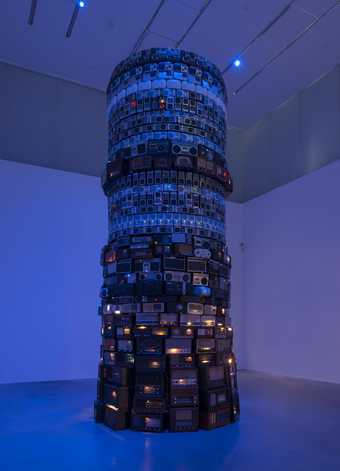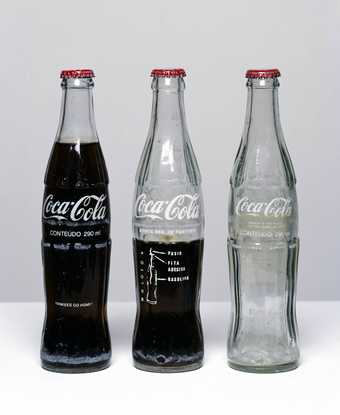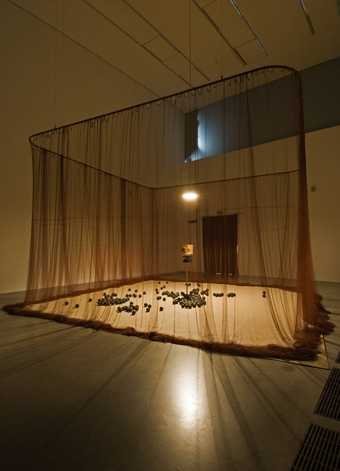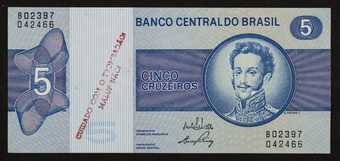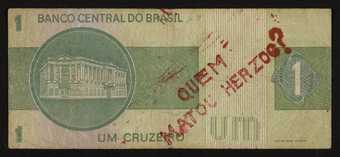Cildo Meireles's work is characterised by a high degree of interactivity, as well as recurring motifs of barriers, fencing and mesh. For a special event, Meireles invited members of the public to help create the latest version of his work Meshes of Freedom.
He told us about the significance of the work and why art is not just for the eyes.
My name is Cildo Meireles. I’m an artist (supposedly) and I live in Rio de Janeiro, Brazil, where I also work. From the beginning I was interested in the idea that for every new idea you are free to start from zero across that material procedure. It is a thing that always fascinated me. So in the show you can maybe notice that there is a lot of work going into different directions, and this type of thing. But if I could resume with one piece, I think Malhas da Liberdade would resume it, the ‘Meshes of Freedom’, which is a kind of very rational structure that seems crazy but is still very precise. It’s a kind of waterfall of bifurcations. Because that’s a little bit as my mind operates, and it’s always like shifts and bifurcating. This piece starts as a doodle, and the first version I did, it was, it is here is the cotton version. I pay a fisherman that used to do fish net, to do a net following this procedure. And then for this event at Tate, I decide to do a project, the fourth version, which is a plastic version that people could build themselves. Because if you do these things, it becomes much more easily comprehensible. Gabriella Salgado This project is called Meshes of Freedom, and is the fourth version of a work that Cildo Meireles started in 1976, and is made of plastic bits which were fabricated in Brazil and sent to London; so we can offer people to bring to the gallery and build the biggest version of Meshes of Freedom to date. Cildo Meireles We have a unit, and this unit intersects to other identical units by the middle, and at the same time is intersected by the middle, but that one, and then successively. Gabriella Salgado So this is the formation principle that is at the basis of all meshes of freedom in all their versions. So it comes out of a childhood doodle, and it provides the principle for the connecting system that forms all the meshes. So this is what we reproduced in the card when we sent it out to people, so they understand that the mesh is always an open structure. It doesn’t need to be closed, so it always allows some more connections. Cildo Meireles The idea is that people could join each other at the same time, the same space, in order to build this larger version of the piece. Gabriella Salgado He said that at some point he thought they could be seen as an installation, these structures could be used as a prison cell, but it is always open, so it is a prison cell that contradicts itself, because you can’t contain anything safely. It’s always open for things to come in and out of it. [Background hum of the public taking part in building the meshes] The idea is to throw the piece out in the world and let it have its own life. He is very well known internationally, but this is the first time that he has an exhibition in the UK, so Tate Modern has his first retrospective to date. Cildo Meireles An art [exhibition] should be an experience for someone who has no eyes. It’s not that the eye is not important; it’s very important. But at the same time I think there is the other sense, that you should use it, in order to reach a better comprehension of things


